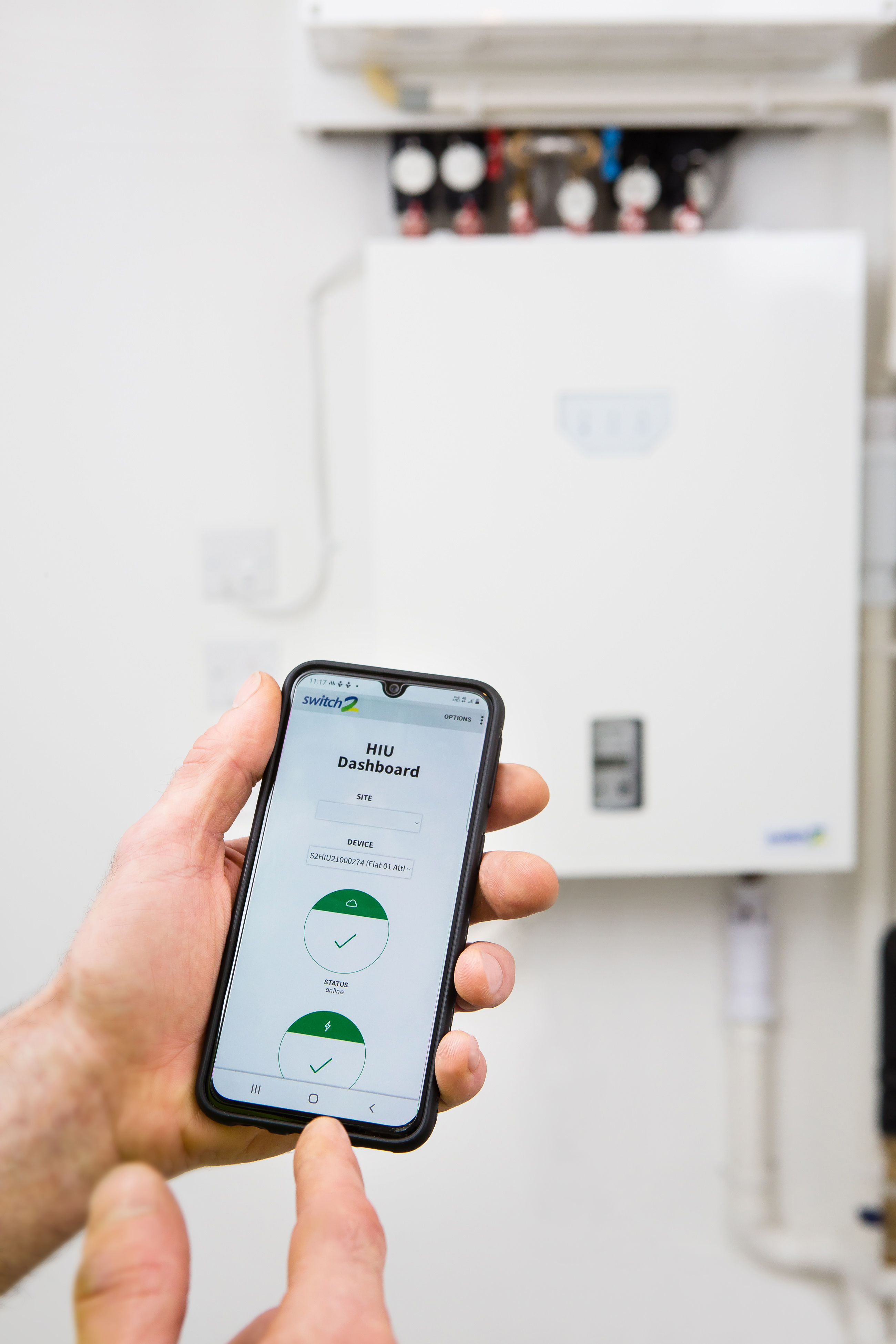In this instalment of our series of blogs examining the role Heat Interface Units (HIUs) play in heat networks, we take a look at the key components which make up a Heat Interface Unit.
While HIU technology has been developed and improved over the years, becoming more efficient and sophisticated with the improvements to performance seen by each consecutive generation of unit, the essential components remain consistent. Understanding what is beneath the cover of a HIU, will give you a better idea of how the system works, and how heat and hot water are supplied to residents homes.
Plate heat exchangers - plate heat exchangers are used to transfer heat from one circuit to another while maintaining hydraulic separation. They have become very common in many applications.
DHW control valves and actuators – these components are responsible for ensuring the occupier gets domestic hot water at the right temperature and in a reasonable time.
There are two types of valve:
- A mechanical temperature control valve: modulates in order to maintain the temperature output using a wax filled capsule, like those found within a thermostatic radiator valve, but has a capillary which links to a temperature sensor. The valve body would be designed to switch off the tertiary heating supply when domestic water is being called and would have to be combined with a differential pressure control valve to ensure the valve is not influenced by fluctuating pressures from the primary / secondary side of the network.
- An electronic control valve and actuator: this is a motor open / motor closed action using a finely tuned fast response actuator to modulate the control valve based on the data available from all sensors within the HIU. This can ensure a fast and accurate control of domestic hot water. The control valve is often a Pressure Independent Control (PIC) valve, which self-adjusts to the fluctuations in pressures from the network.
Keepwarm and bypass control – Keepwarm can be used to maintain a certain temperature within the domestic hot water plate heat exchanger. This is done to keep delays in receiving hot water to a minimum when the unit has not been operated for a prolonged period. It should be noted that a mechanical HIU will have this feature permanently enabled, but it will be set at commissioning and always be in operation. Electronic HIUs are often able to vary settings based on the time of year, domestic hot water usage patterns and at times switch the function off. Increasing overall network efficiency while reducing heat loss and running cost to the end user.
Space heating control valve – The space heating control valve is used to control the input of heat from the primary / secondary network into the tertiary space heating network. Again, these can either be mechanically or electronically controlled.
Strainer – A strainer holds a specified mesh size designed to catch particles over a certain size within various locations of a system. Around the HIU they can often be found; in the mains water feed, primary/secondary flow into the HIU and on the return pipe of the tertiary heating system. The primary objective is to protect the HIU plate heat exchangers and control valves from any debris in the system. These strainers should be part of the service regime, if they are allowed to block the performance of the unit will be adversely affected.
Expansion vessel – The expansion vessel is required on HIUs with indirect space heating and is used to protect the closed water heating system from any excessive pressure fluctuations caused by the thermal expansion experienced from the heating and cooling of the system. They should be sized based on the overall volume of the system and commissioned accordingly on installation. ‘Indirect’ HIUs are often supplied with a sized vessel designed to cover most applications, but this should still be checked by the system designer.
Circulation pump – On HIUs with indirect space heating, a circulation pump is supplied to efficiently pump the treated water around the tertiary heating network. Traditionally either fixed or three speed, they are now fully modulating to adapt to the varying system scenarios and requirements. They also now include several other components required to make the system compliant. Including automatic air vent, pressure relief valve, pressure sensor and drain points.
Filling loop – These can be found either internally or externally to the HIU and facilitate the filling and pressurisation of the tertiary heating network from either the mains water supply or from the network directly with pre-treated water. Regulations require that these should be removed and stored when not in use.
Secondary protection – There are occasions when secondary protection control circuits are required. One such example would be if using the HIU to directly feed an underfloor heating manifold without the use of a separate circulation pump and mixing valve. The HIU pump and temperature output can be programmed for such a scenario, however the secondary protection circuit is required to ensure that no damage can be done to the floor, if in the worst case, a failure occurs within the HIU.
While certainly not a substitute for the knowledge and experience of an expert, we hope this short guide has provided you with an overview of the key components of a HIU, their contribution to the overall working of the system, and how these supply residents homes with the heat and hot water essential to our everyday lives.
If you found this interesting, then take a look at ICON, our next generation HIU. ICON combines the reliability of time tested HIU design, with connected Internet of Things (IOT) technology to deliver efficiency savings, as well as cost savings from the remotely accessible management portal.


